What is a Smart City?
Smart cities are taking shape in your city one day at a time. They are managed by cameras and sensors that gather real-time information from interconnected IoT devices that rely upon the 5G network through things like small cells. You might see your money become digital instead of physical, and you’ll eventually only use your single digital identity to access everything in your life. AI surveillance will replace the police to prevent crime. Transitioning to smart cities is part of the United Nations’ 17 Sustainable Development Goals.
Singapore is currently the best example of a smart city on the planet.
Closed-Circuit Television (CCTV)
A closed-circuit television (CCTV) is a TV system in which signals are not publicly distributed but are monitored, primarily for surveillance and security purposes.
Facial Recognition
Facial recognition is a biometric technology that uses cameras to match footage of individuals with images from a database. They scan distinct facial features to make detailed biometric maps of individuals. Often facial recognition surveillance cameras are mobile and concealable.
Clearview AI has made the most sophisticated facial recognition and search technology. By simply plugging someone’s picture in the app finds every picture of that person that’s been posted on the internet. It did this by scraping and storing billions of pictures from the public Internet into a searchable database of faces.
The Future Relationship of Your Digital Identity & Money
Digital identity identifies people that are doing financial transactions. Central Bank Digital Currency (CBDC) is a blockchain technology dimension that is digital fiat money issued by central banks. Here are the countries that are using or plan to use CBDC. Linking one’s digital identity to their CBDC wallet lets the central bank authenticate their identity. Your digital identity will be used to access everything including
- smart cities
- telecommunication device ownership and usage
- access and use services
- social media
- bank accounts
- food
- to travel
- to shop
- to get healthcare
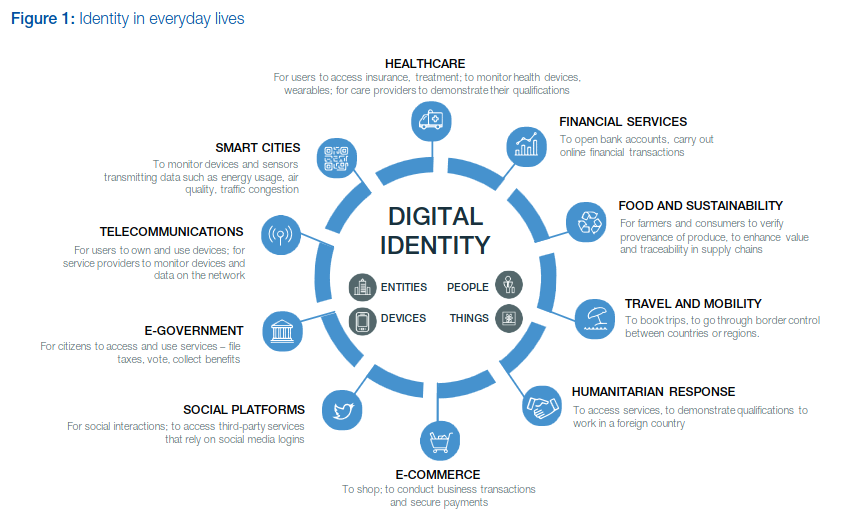
And he causeth all, both small and great, rich and poor, free and bond, to receive a mark in their right hand, or in their foreheads:
And that no man might buy or sell, save he that had the mark, or the name of the beast, or the number of his name.
Revelation 13:16-17 of the King James Version of the Holy Bible
Regarding digital identities, the first day of the 2022 B20 Summit had the Indonesia’s Minister of Health Budi Gunadi Sadikin say “let’s have a digital health certificate acknowledged by WHO — if you have been vaccinated or tested properly — then you can move around”.
ID.me, the digital identity network, reached 50 million users verified to the federal standards for consumer authentication, NIST Identity Assurance Level 2. Their identity wallet lets registered users to login and consent to release their previously verified identity to easily access services at multiple government, private, and non-profit organizations.
Artificial Intelligence
Artificial intelligence, or AI, is technology that lets computers and machines mimic human intelligence and problem-solving.
AI CCTV Camera Surveillance
AI CCTV cameras are cheaper and more accurate than traditional systems because there is no room for human error. The AIGS Index will you show how AI surveillance works in your country. Worldwide there are 75 of 176 countries actively using AI technologies for surveillance purposes. This includes:
- smart city/safe city platforms (fifty-six countries)
- facial recognition systems (sixty-four countries)
- smart policing (fifty-two countries)
Here’s a map of where AI surveillance technology came from in different countries.

Here’s another map showing which companies are contributing the most to AI surveillance.

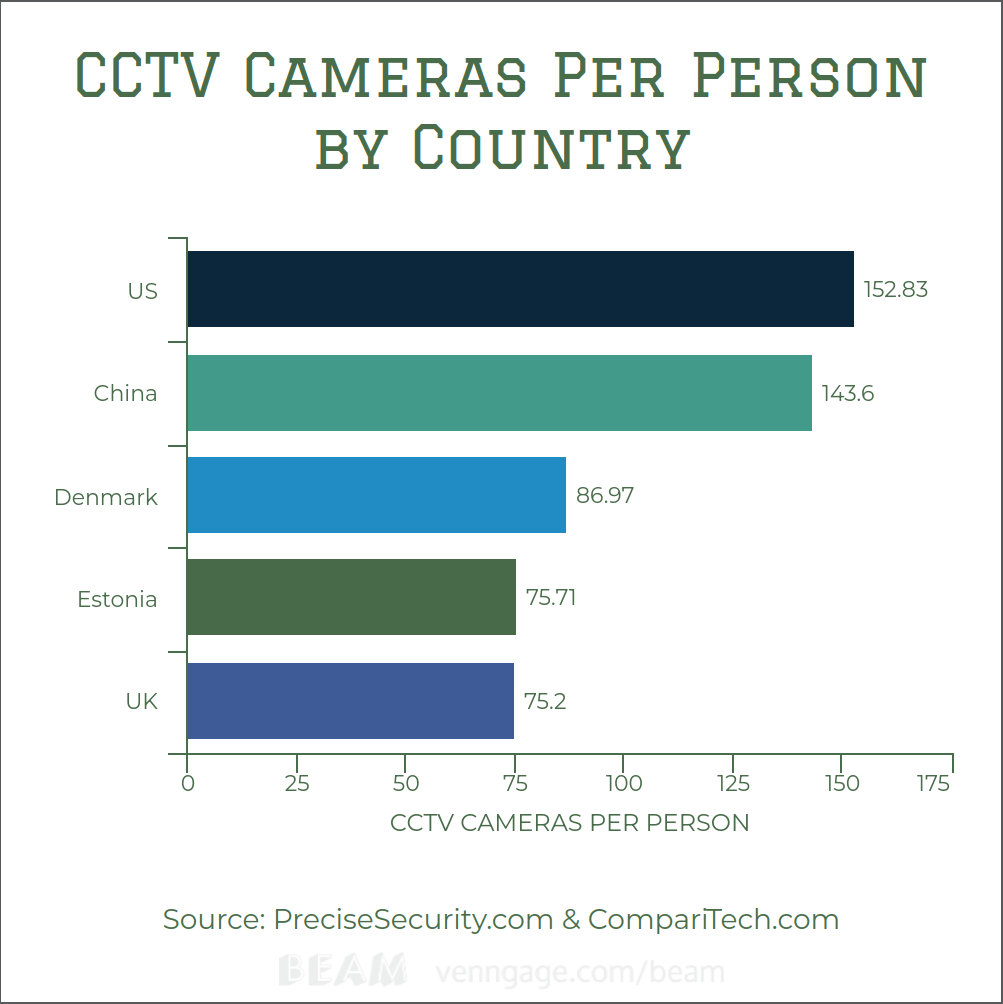
American AI Surveillance
While China is known for it’s surveillance and social credit system, the USA has more CCTV cameras per person. Regarding the number of cameras per person, the United States remains a clear leader in the world.
Amazon uses non-human AI supervisors called ADAPT (Associate Development and Performance Tracker) to track employee productivity. No need for human supervision.
Chinese AI Surveillance
China is a major driver of AI surveillance worldwide. Their companies, such as Huawei, Hikvision, Dahua, and ZTE, supply AI surveillance technology in 63 countries, thirty-six of which have signed onto China’s Belt and Road Initiative (BRI). Huawei alone supplies AI surveillance technology to at least 50 countries worldwide. No other company comes close.
Sharp Eyes is one of many overlapping technological surveillance projects by the Chinese government that have lead to the installation of over 200 million public and private security cameras in China.
American Cities Using Smart Policing
Smart policing feeds big data into an algorithm to prevent, predict, and respond to crime. The police uses AI for facial recognition and predictive policing to solve and stop crimes, but it’s not foolproof because it’s lead to wrongful arrests. Kim Hart saw more American cities using AI surveillance for things like
- Baltimore police using drones for daily surveillance of their city’s residents
- Elbit Systems building towers in Arizona to spot people as far as 7.5 miles away.
- Anduril Industries making towers with a laser-enhanced camera, radar, and communication system to detect motion over a two-mile radius to let AI pick out people
- DARPA’s OFFSET program that uses drone swarms in the city for different missions
British AI Surveillance Using ULEZ Cameras
The Ultra Low Emission Zone (ULEZ) in London is a specific area where strict vehicle emissions standards are enforced. Its main goal is to reduce air pollution and encourage the use of less polluting vehicles.
ULEZ cameras watch to ensure compliance with the emission standards set for vehicles operating within the designated ULEZ areas. Automatic Number Plate Recognition (ANPR) cameras check the vehicle’s registration against a database to see if it meets the emission standards or if the daily charge has been paid.
ULEZ cameras have been controversial because
- they have had a financial impact on drivers
- cause economic concerns from trades people and small businesses
- they have affected low-income earners more than others
Here’s where ULEZ cameras are located in London, England.
15-Minute Cities
French urbanist Carlos Moreno developed 15-minute cities that puts all of life’s necessities of daily life within a 15-minute walk or bike ride, including workplaces, schools, doctor’s offices, parks, libraries, restaurants, grocery stores, and much more. Since early 2020 Paris mayor Anne Hidalgo championed it to promote active mobility in lieu of cars: car speed has been limited to 30 kilometers per hour on many streets; cars have been banned along the Seine one Sunday each month; and plans to include a biking lane on every street by 2024 are also in the works.
Geofencing
A geofence is a virtual perimeter for a real-world geographic area gathered from either Global Positioning System (GPS), radio frequency identification (RFID), Wi-Fi, or cellular data. It can used to change the behaviour of a car or a group of cars using simulation tools, such as a smartphone app. Ford is testing connected vehicle technology using geofencing in hopes of removing speed limit signs. Gothenburg, Sweden is testing geofencing for public transport. Geofencing can also be used to
- change a car’s speed during certain areas or times
- switching a car’s fuel source from fossil to electric in hybrid cars
- see if the car belongs there
- switch hybrid vehicles to electric driving mode
- and ensure compliance with regulations
- control where cars can park or blocking cars on roads with restrictions

Connecting Your Smart City Through 5G Technology
5G is fifth-generation mobile network wireless technology powering the Fourth Industrial Revolution. It will deliver data with less than a millisecond of delay (compared to about 70 ms on today’s 4G networks) and bring peak download speeds of 20 gigabits per second (compared to 1 Gb/s on 4G) to users. A few early favorite technologies have emerged, including millimeter waves, small cells, massive MIMO, full duplex, and beamforming. As of 2018, 5G will be used for the following:
- way faster mobile data speeds, with up to 50Mbps outside and 1Gbps inside
- the Internet of Things (IoT) to connect everyday things to the Internet
- giving devices low latency and high reliability
The Different 5G Bands
The first layer of 5G spreads over multiple frequency ranges so it can be used in different countries and regions. Unlicensed ranges are between 400 MHz to 100GHz and the licensed bands are from 600 MHz up to 39 GHz. There are three main frequency ranges or bands for earth-bound or terrestrial frequencies, such as:
- low-band 5G at 1 GHz and below to cover large areas
- mid-band 5G between 1GHz to 6 GHz used in cities and suburbs
- high-band 5G at 6 GHz and above used in dense cities
Millimeter Waves (mmWave)
Millimeter waves (mmWave) are broadcast at frequencies between 30 and 300 GHz to fix the problem of less bandwidth and slower service caused by more people and devices using more data than ever on the same RF spectrum bands mobile providers have always used. It is a directed energy weapon (DEW) that can make one kilowatt of power, has a bigger beam size than high energy lasers, and can affect multiple targets at once. It’s used for crowd control and area denial, capable of causing serious injury. It is used in Active Denial Technology at a frequency of 95GHz.
Types of Base Stations Used for 5G Connectivity
There’s a variety of base stations that connect your devices to 5G, including
- small cells
- macrocells
- Distributed Antenna Systems (DAS)
- monopoles
- camouflaged
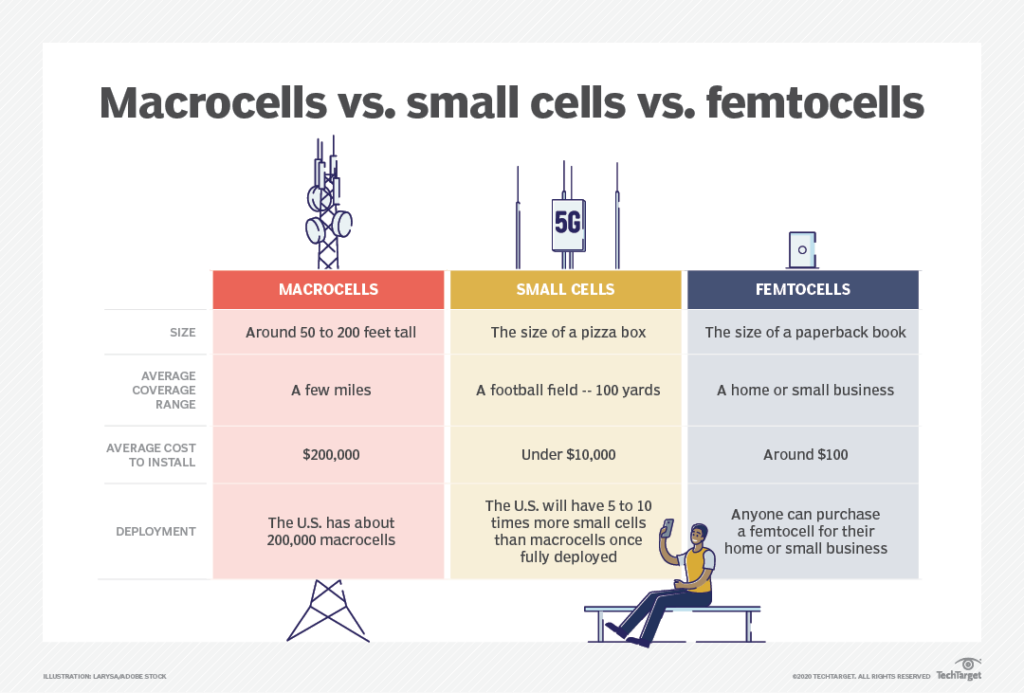

5G Connectivity in Dense Cities
Small cells are portable, low-power mini base stations used in densely populated areas, such as cities, that are roughly 250 metres apart. You’ve probably seen them on or near street light poles and on top of buildings. Here’s what they look like.

5G Connectivity in the Boonies & the Burbs
Macro cells are the bigger structure we often associate with cell towers that give 5G coverage in larger areas. You’ll spot one of these in the suburbs and in the country.
5G Connectivity for Dense Big Buildings
Distributed Antenna Systems (DAS) are a network of antennas distributed throughout a coverage area. You’ll find these in big buildings, stadiums, and other places with a high concentration of people.

5G Connectivity in Aesthetic Cities
Monopoles are towers with a single pole structure, typically found in cities for aesthetic reasons.

Staying Lit Through 5G Street Lights
LED street lights are the backbone of smart cities that are featured with
- radars for motion sensing, traffic control, environmental monitoring
- LED incapacitators that can emit different light frequencies at a very high rate of change to function like a stun gun
They can be used for things, such as
- attaching different types of sensors and cameras for video surveillance
- small cells for 5G connectivity
- environmental monitoring
- to help road crews track rain, snow and ice accumulation
- or watch stormwater flows
- traffic management applications
- like watching traffic flow
- and helping people find parking spots
Cloud 5G Defense Systems
Lockheed Martin is working with Microsoft on 5G.MIL® solutions to advance reliable connections for U.S. Department of Defense systems capable of spanning air, land, sea, space and cyber domains. Lockheed Martin is an American company specializing in defense tech and scientific discovery. Azure is Microsoft’s cloud platform with over 200 products and cloud services. The two companies will test how to effectively expand and manage 5G networking technology for Joint-All Domain Operations (JADO) defense applications using Microsoft’s 5G and Microsoft Azure services for Lockheed Martin’s Hybrid Base Station, essentially a military-grade ruggedized “multi-network gateway and cell tower in a box.”
The Health Risks of 5G
Cancer and Brain Tumors
Sprint shut down a cell phone tower on the campus of a California elementary school after some parents said it may be linked to several cases of childhood cancer. Those families at Weston Elementary School in Ripon claim the tower could have exposed their kids to harmful radiation.
Parents in Wyandotte, Michigan are not giving up their efforts to take down a 5g cell phone tower on top of an elementary school. Associate Professor at Wayne State University John Liu, Electrical and Computer Engineering, said that it continually transmits 40 Watts and causes high risk of brain tumors. A GoFundMe was started to raise litigation funds to remove the towers.
Radio Frequency Radiation’s Proven Harm
The WHO’s International Agency for Research on Cancer (IARC) concluded in 2011 that RF radiation of frequencies 30 kHz – 300 GHz are possibly carcinogenic to humans. More recent evidence, including the latest studies on cell phone use and brain cancer risks, indicate that RF radiation is proven carcinogenic to humans. Most contemporary wireless signals are pulse-modulated. Harm is caused by both the high-frequency carrier wave and the low-frequency pulsations.
Long before 5G was proposed, many petitions and appeals by international scientists, including the Freiburger Appeal signed by over 3,000 physicians, called for a stop to the expansion of wireless technology and a moratorium on new base stations. In 2015, 215 scientists from 41 countries told the UN and WHO that “numerous recent scientific publications have shown that electromagnetic fields (EMF) affects living organisms at levels well below most international and national guidelines”. Over 10,000 peer-reviewed scientific studies show how RF radiation harms human in ways such as:
- Alteration of heart rhythm
- Altered gene expression
- Altered metabolism
- Altered stem cell development
- Cancers
- Cardiovascular disease
- Cognitive impairment
- DNA damage
- Impacts on general well-being
- Increased free radicals
- Learning and memory deficits
- Impaired sperm function and quality
- Miscarriage
- Neurological damage
- Obesity and diabetes
- Oxidative stress
Kids that are exposed to RF radiation suffer from autism, ADHD, and asthma.Negative microbiological effects have also been recorded. RF radiation also affects other wildlife, laboratory animals, and plants, including:
Robert F Kennedy Jr. and the Children’s Health Defense (CHD) won their case against the FCC on August 21st, 2021 when the US Court of Appeals decided that the FCC failed to consider the non-cancer evidence regarding adverse health effects of wireless technology when it decided that its 1996 radiofrequency (RF) emission guidelines protect the public’s health.
How You Can Measure EMF Radiation & Frequencies in the Palm of Your Hand
EMF meters measure electromagnetic fields (EMFs), which are physical fields made by an electrically charged object. They are broken down into three types:
- Radio Frequency (RF)
- Electric Field
- Magnetic Field
EMF radiation is categorized by frequency and it strength. The frequency is measured in hertz (hz), the number of cycles per second. The strength measures radiation strength in units of milligauss (mG) or microtesla. A good meter will show as low as .1 milligauss or .01 microtesla.
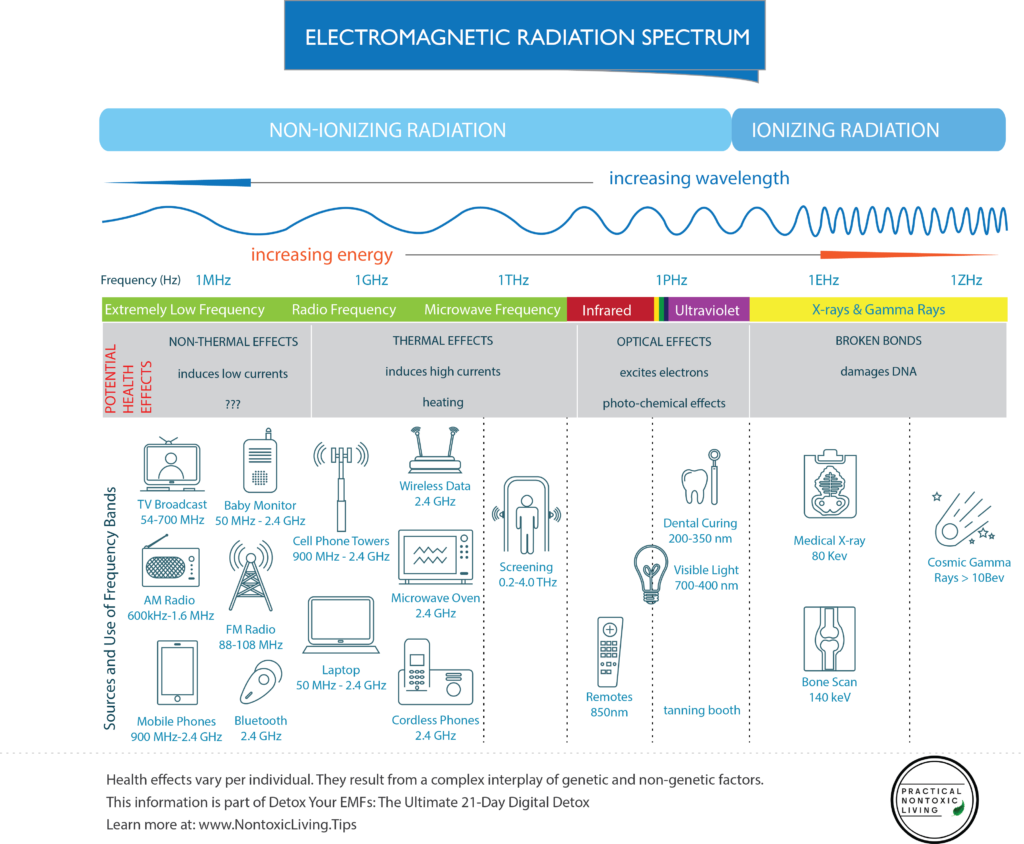
What Do You Think of Smart Cities?
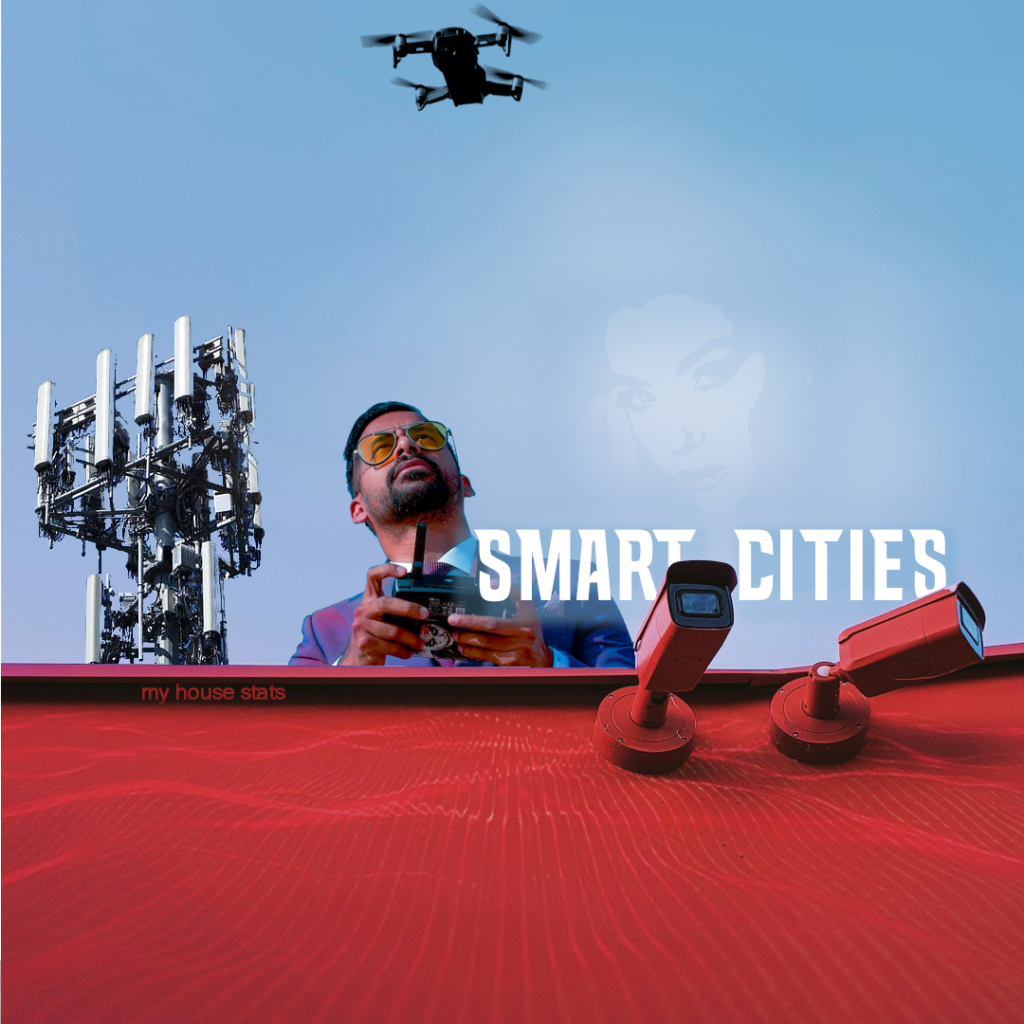
What do you think of smart cities and all of the components being laid to make them a reality? What are your thoughts on 5G wireless technology? What do you think about the cameras being put up in new places in your city? How do you feel about AI replacing your police force?
Leave your answer in the comments below and share this with your friends and family to see what their thoughts are about all of this.


